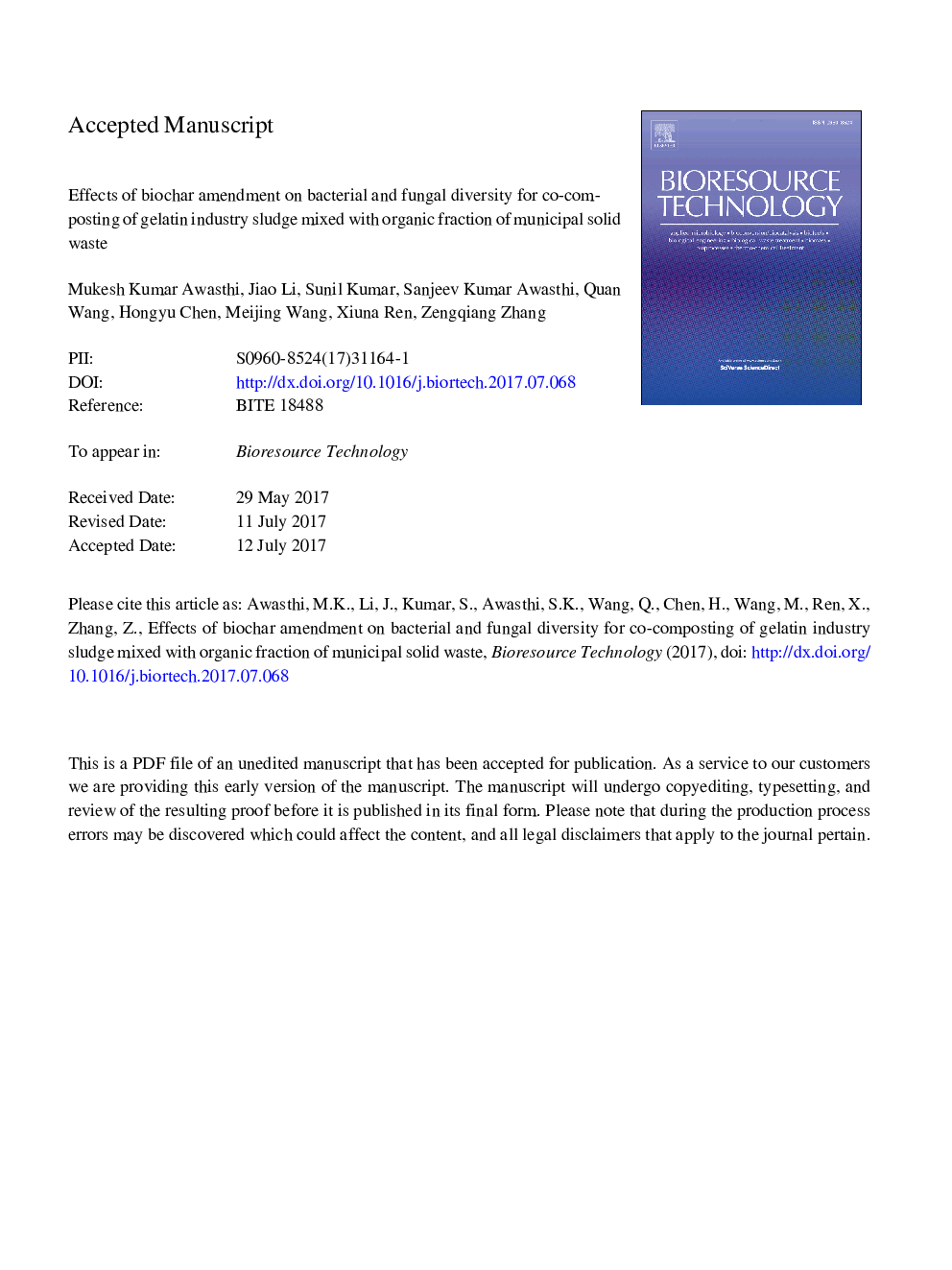| Article ID | Journal | Published Year | Pages | File Type |
|---|---|---|---|---|
| 7069353 | Bioresource Technology | 2017 | 37 Pages |
Abstract
The aim of the study was to evaluate the bacterial and fungal diversities of 18contrastivecomposts applied with 17 different sources mad biochars applied treatments using 16S rRNA and 18S rDNA technology, while T-1 used as a control. The results showed that bacterial species of the phyla Actinobacteria, Proteobacteria and Chloroflexi, and fungi of the phylum Ascomycota and Basidiomycota were pre-dominant among the all treatments. The bacterial genus Subgroup_6_norank, Nocardioides, Pseudonocardia, Sphingomonas, Solirubrobacter and RB41_norank are first time identified in composting ecosystem. In addition, the fungal genus Ascomycota_unclassified, Aspergillus, Penicillium, Pleosporales_unclassified and Herpotrichlellacease_unclassified ubiquitous among the all compost. The Shannon and refraction-curve biodiversity indices showed a clear heterogeneity among all the treatments, which could be due to isolation of new genera in this system. Finally, the principal component analysis of the relative number of sequences also confirmed that bacterial and fungal population indiscriminate in different sources mad biochar applied treatments.
Related Topics
Physical Sciences and Engineering
Chemical Engineering
Process Chemistry and Technology
Authors
Mukesh Kumar Awasthi, Jiao Li, Sunil Kumar, Sanjeev Kumar Awasthi, Quan Wang, Hongyu Chen, Meijing Wang, Xiuna Ren, Zengqiang Zhang,
